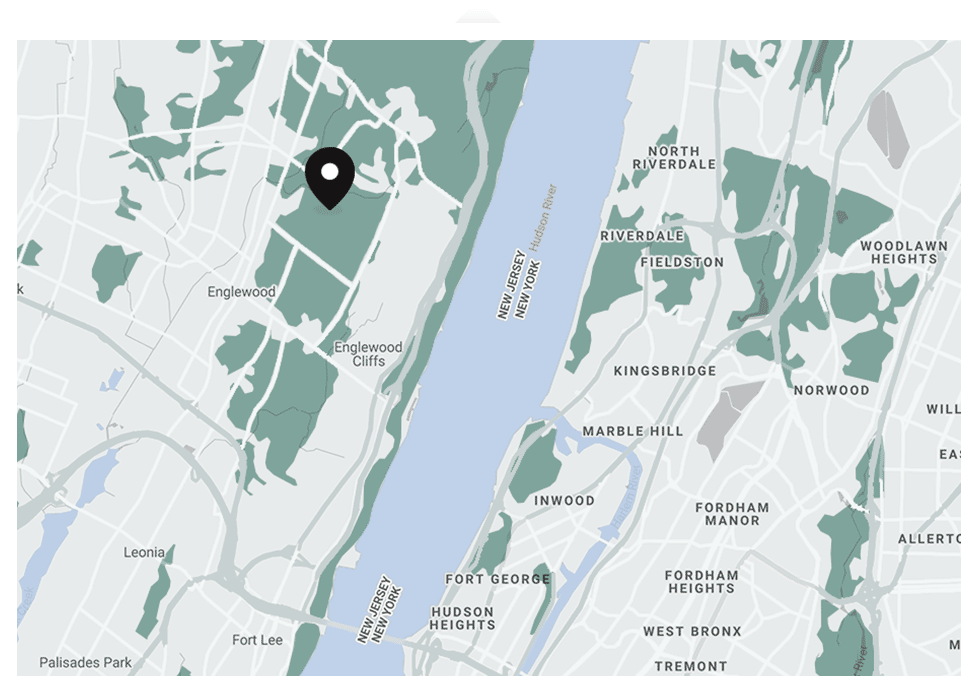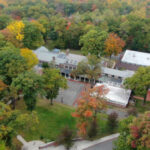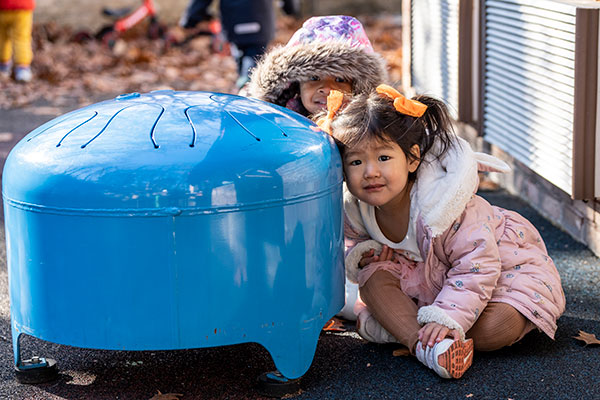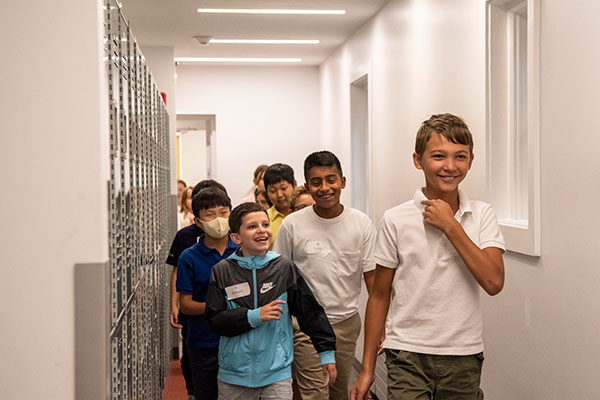the expansive, 14-acre campus of the Elisabeth Morrow School gives children space to explore and enjoy nature.
EMS is not just a building or a collection of classrooms. Our campus includes nature trails, community gardens, a pond, brook, three playgrounds, and outdoor patios attached to many classrooms. Early contact with nature plays an important role in developing responsible environmental behavior. Students eat and play outdoors, weather permitting, learn how plants grow and how they can help them grow, and study the biodiversity of our campus, a certified wildlife habitat.
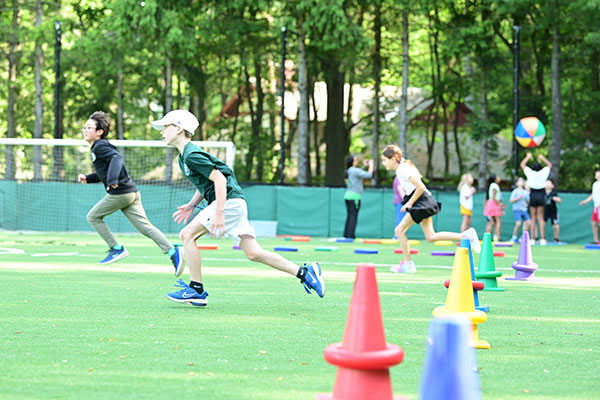
Developing Healthy Bodies
Research shows that activities like running, jumping, and climbing help build strong bones and muscles and can help prevent obesity. Such exercise also helps children develop important motor skills. Exposure to sunshine also provides a healthy dose of vitamin D to help prevent chronic disease.
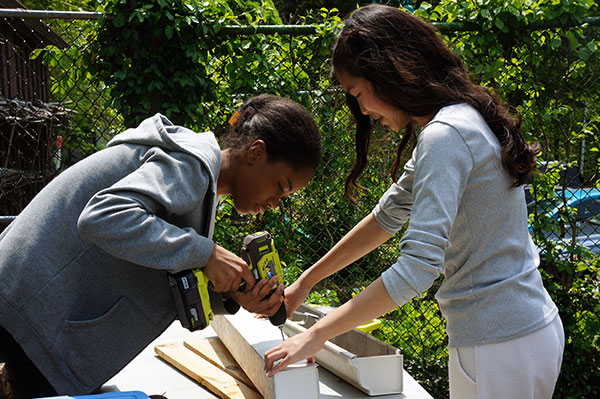
Building Strong Minds
During unstructured, outdoor play, students develop positive social skills like sharing and taking turns. They also use their imaginations to invent games and to explore the world around them. Children who regularly play outside tend to be more self-directed and have longer attention spans.
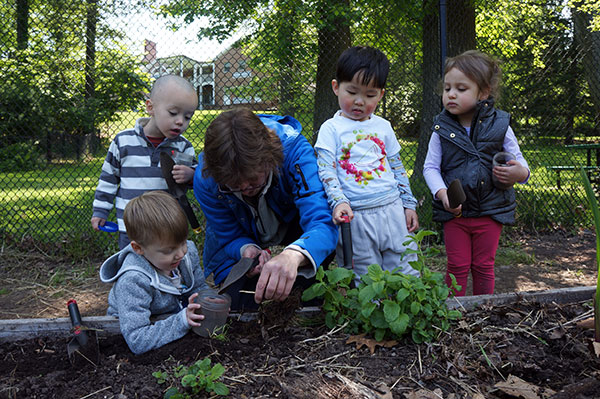
Learning through Sensory Experiences
Outdoor play improves children’s sensory skills. Young children especially learn through their senses. On our campus, they see animals like deer and groundhogs, hear the gurgling of the brook and the splash their rain boots make in the stream, feel the damp soil when they garden, taste the herbs and vegetables they plant, and smell the flowers. These experiences enhance their development of perceptual abilities and connect to lessons from the classroom.
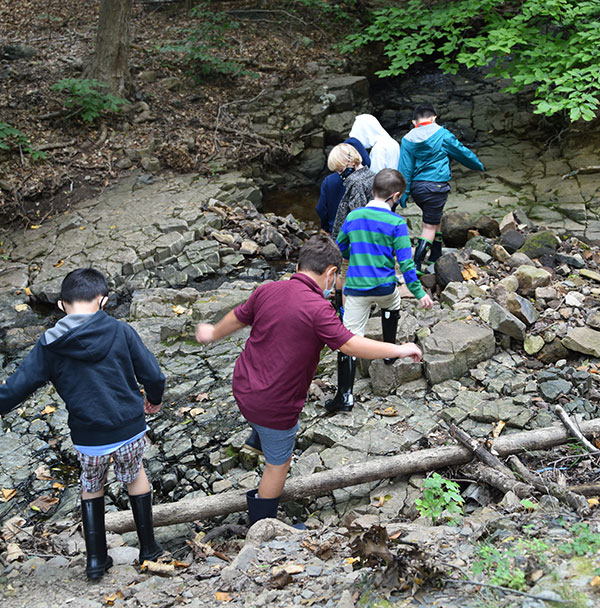
Caring for Our World
Children who develop an appreciation of nature at a young age are more likely to be more conscious of their environmental footprint and concerned about protecting the environment. Hands-on, informal, self-initiated exploration and discovery in local, familiar environments are often described as the best ways to engage and inspire children and cultivate a sense of wonder. These frequent, unstructured experiences in nature are the most common influence on the development of life-long conservation values.
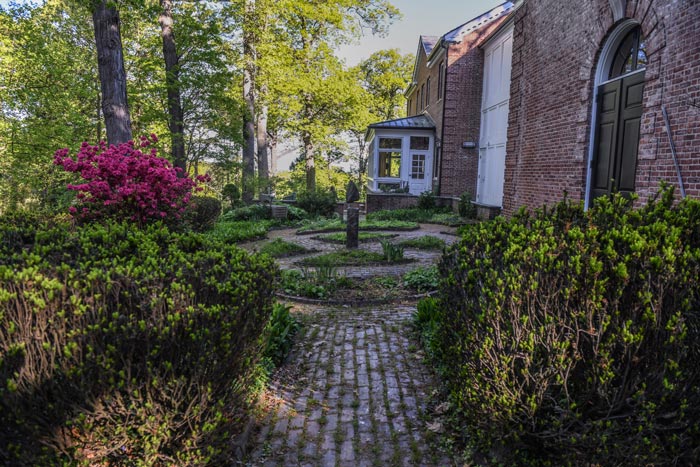
Our Unique, Three-Building Model is designed for optimum student growth and comfort.
Our Early Childhood and Kindergarten students begin their EMS journey in Chilton House, then move across to Little School (Grades 1–4) and, finally, “up the hill” to Morrow House (Grades 5–8). Each building offers classrooms, libraries, and creative spaces with developmentally appropriate resources for their age levels. All of our students have the opportunity to be outside every day for recreation — using our playgrounds, courtyard, and community field — and outdoor learning.
Giving EMS Students Room to Grow at Every Age
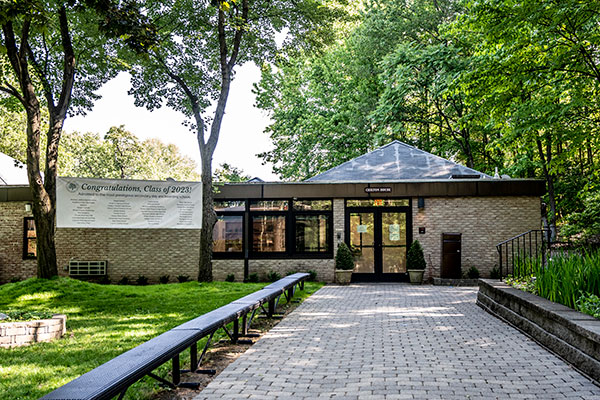
Chilton House (Age 2–Kindergarten)
Children engage in the concept of sustainability and experience a variety of simple gardening activities in the fall and the spring:
- Planting and caring for seasonal vegetables, flowers, and bulbs
- Learning about respect for the Earth and the environment
- Harvesting the plants and learning about the life cycle
Our physical education focuses on students’ achievement of gross and fine motor control. Gross motor activities include running, jumping, hopping, galloping, and skipping and physical manipulations such as throwing, kicking, and catching. Fine motor control activities and materials increase students’ ability to use and coordinate the small muscles in the hands and wrists with dexterity. In addition to physical education classes and their playground time, students use patios attached to each classroom for motor play.
Little School (Grades 1–4)
In science, students explore the natural world both in the science lab and outdoors. Students engage in measuring, counting, observing, and recording their experiences and conduct hands-on experiments, demonstrations, and design challenges to reinforce learning concepts. Activities include:
- Observing living organisms, including ladybugs, bean plants, and mammals
- Hatching chicken eggs and caring for the chicks
- Identifying steps of various life cycles and how organisms cope with seasonal changes
- Connecting basic astronomy topics like day and night and Earth’s seasons to living organisms
Students in first and second grade also learn about nature and gardening through hands-on experiences and study the biodiversity of our 14-acre campus. Students work in the garden to plan, prepare, plant, and harvest vegetables and flowers that are specifically grown to connect to areas of study at their grade level.
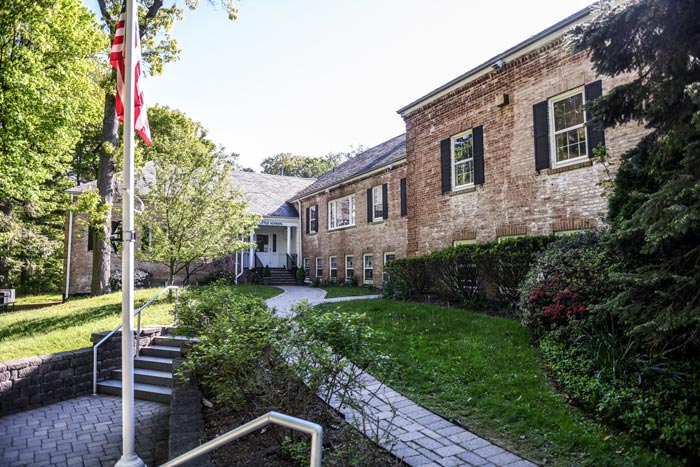
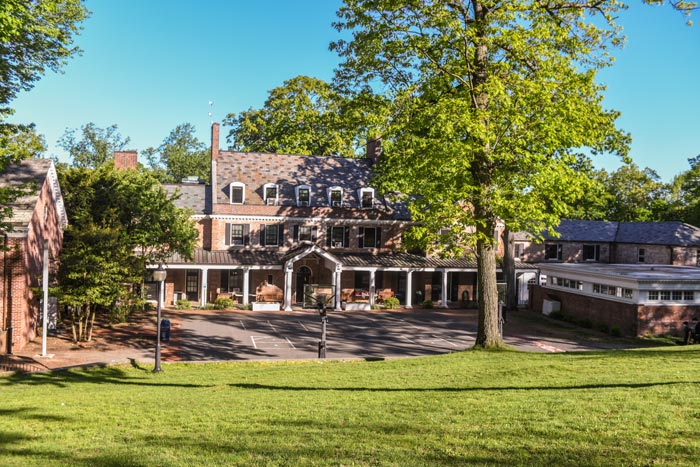
Morrow House (Grades 5–8)
Students identify areas of interest that they would like to investigate and develop related questions, such as:
- How does The Elisabeth Morrow School campus change over the school year?
- What causes these changes?
- How do scientists communicate their data and discoveries with the world?
Through both qualitative and quantitative data collection, students document long-term changes in a particular spot on campus and, through activities, explore connections to underlying physical science concepts. Students additionally engage in the engineering design process through a collaborative design challenge in which they plan, build, test, and optimize bird feeders to hang outside of their classroom.
